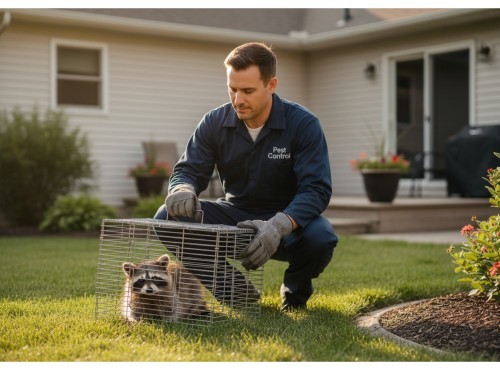Compliance and Professional Responsibility
In Ontario, wildlife control is regulated through municipal bylaws and provincial legislation under the Ministry of Natural Resources and Forestry (MNRF). The law stipulates that any captured wild animal must be released within twenty-four hours and within one kilometre of the site of capture. Technicians must document each relocation and apply only approved live-capture equipment. These requirements align with NPMA and CPMA ethical guidelines, reinforcing that wildlife removal should prioritize animal welfare and public safety over eradication.
Licensed Pest Management Professionals (PMPs) must also observe Health Canada’s Pest Control Products (PCP) regulations and WHMIS labelling when chemical deterrents or sanitation agents are employed during remediation. Such compliance underscores the industry’s movement toward transparency and professionalism.
From Extermination to Integrated Solutions
Traditional removal once focused on trapping or exterminating nuisance animals. Current practice replaces that reactive model with comprehensive IPM programs built on inspection, exclusion, and habitat modification. The widely adopted three-stage framework includes:
- Inspection and Identification – Technicians conduct a visual inspection using ladders or thermal devices to confirm species presence. Evidence such as droppings, nesting debris, and structural voids is recorded in service logs.
- Live Capture or Exclusion – Animals are guided out through one-way doors or live traps that prevent re-entry. This stage minimises stress and complies with humane standards.
- Structural and Habitat Modification – After removal, ingress points are sealed, rooflines are repaired, and attractants such as unsecured garbage or open vents are addressed.
This structured approach demonstrates the principle of “get them out, keep them out.” It reflects an industry consensus that sustainable control depends on prevention, not reaction.
Field Realities in the Toronto Context
Applying these methods in Toronto presents unique obstacles. Multi-unit dwellings near Queen Street West or Jarvis & Carlton Street require coordination among tenants and building management. Older brick homes in the Annex or Riverdale may have unsealed soffits or deteriorated mortar joints providing rodent or bat access. Commercial complexes downtown often contain concealed utility penetrations that act as ingress points for birds and raccoons.
Local PMPs must adapt exclusion techniques to these diverse structural types. For instance, when responding to nocturnal noise reports from a semi-detached residence near Bloor & Bathurst, a technician might find a raccoon den in the attic insulation. The immediate response involves documenting damage, confirming absence of dependent young, and installing a one-way exclusion door. Subsequent sealing of roofline gaps with galvanized mesh finalizes the intervention.
The Role of Industry Training and Equipment
Modern wildlife management depends on advanced equipment and continuous training. Certified technicians routinely use B&G sprayers for sanitation, foam applicators for sealing voids, and tamper-resistant stations for rodent deterrence when secondary pests are present. Drone-based roof inspections are increasingly adopted for hard-to-reach sites across North York and Scarborough.
Training programs recognized by CPMA and NPMA emphasise humane capture protocols, zoonotic-disease awareness, and technician safety. Professionals learn to evaluate harbourage sites, interpret behavioural patterns, and apply exclusion materials such as heavy-gauge wire mesh or ridge-cap barriers.
Service Taxonomy within the GTA
Toronto’s pest-control industry now segments humane services into three inter-related categories: wildlife exclusion and live-capture, infestation mitigation and remediation, and integrated maintenance programs. Each category aligns with IPM methodology while maintaining animal-welfare compliance.
Wildlife Exclusion and Live-Capture Services
This service type addresses direct animal intrusion into structures. Common target species include raccoons (Procyon lotor), eastern grey squirrels (Sciurus carolinensis), little brown bats (Myotis lucifugus), striped skunks (Mephitis mephitis), and urban birds such as pigeons or starlings. Firms like Skedaddle Humane Wildlife Control and Critter Control Canada apply systematic inspection, ingress/egress analysis, and one-way exclusion devices combined with permanent sealing.
A standard workflow for a residential case in the Beaches or Etobicoke would include:
- Initial Assessment – Identify entry points, droppings, and insulation displacement.
- Device Installation – Fit a one-way door or live trap at the main opening, typically a soffit or chimney cap.
- Observation and Removal – Monitor activity for twenty-four to forty-eight hours to confirm exit.
- Permanent Exclusion – Seal all verified access points with flashing or mesh barriers and issue a warranty.
Ontario’s 24-hour release rule applies, reinforcing that relocation beyond the property line must remain within the specified one-kilometre radius.









